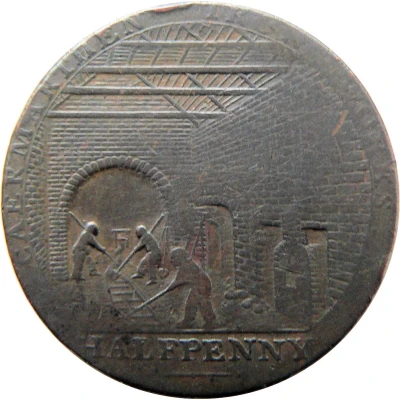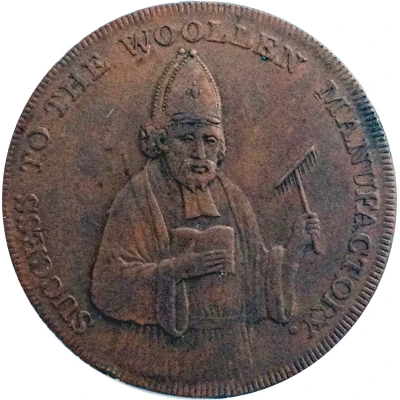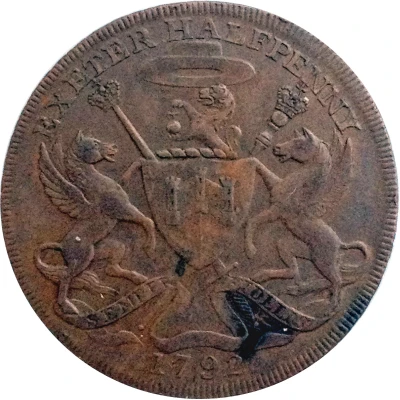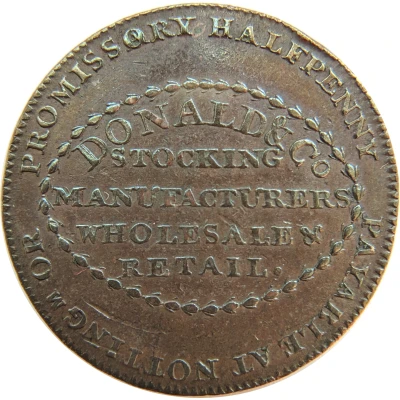


½ Penny Carmarthenshire - Carmarthen / I. Morgan ND
1792 year| Copper | - | 29 mm |
| Issuer | United Kingdom (United Kingdom, British Overseas Territories and Crown Dependencies) |
|---|---|
| Type | Token |
| Year | 1792 |
| Value | ½ Penny (1⁄480) |
| Currency | Conder tokens (1787-1797) |
| Composition | Copper |
| Diameter | 29 mm |
| Thickness | 2 mm |
| Shape | Round |
| Technique | Milled |
| Orientation | Coin alignment ↑↓ |
| Demonetized | Yes |
| Updated | 2024-10-09 |
| Numista | N#109190 |
|---|---|
| Rarity index | 86% |
Reverse
Outer circle containing the interior of a forge showing a tilt hammer and a man working at an anvil. Lettering around and in exergue
Script: Latin
Lettering:
KIDWELLY WHITLAND BLACKPOOL AND CWMDWYFRON FORGES. ·
I · MORGAN
Translation: John Morgan
Edge
Plain with lettering
NOTE: varieties exist
Lettering: PAYABLE IN LONDON · BRISTOL & CARMARTHEN · X ·
Comment
John Morgan, as well as being an ironmaster and tin plate manufacturer, was a banker in Carmarthen trading as John Morgan & Co. This is one of the most detailed tokens in the whole Conder series, and the fine work can only really be appreciated through an eye glass.Interesting fact
The Token ½ Penny coin from Carmarthenshire, Wales, issued in 1792, is interesting because it was created as a local currency during a time of economic hardship. The coin was minted by I. Morgan, a local ironmaster, and was made of copper. It features an image of a sailing ship on one side and the initials "I.M." on the other. The coin was used as a substitute for the official British currency, which was in short supply at the time, and it helped to facilitate trade and commerce in the region. Today, the coin is a rare and valuable collector's item, with some examples selling for thousands of pounds.



